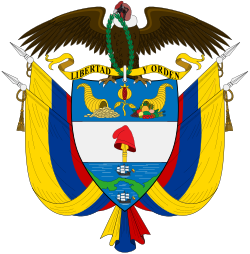| History of Colombia | ||||||||||||||||||||
|---|---|---|---|---|---|---|---|---|---|---|---|---|---|---|---|---|---|---|---|---|
 | ||||||||||||||||||||
| Timeline | ||||||||||||||||||||
| ||||||||||||||||||||
This is a timeline of events related to the Colombian conflict.
| History of Colombia | ||||||||||||||||||||
|---|---|---|---|---|---|---|---|---|---|---|---|---|---|---|---|---|---|---|---|---|
 | ||||||||||||||||||||
| Timeline | ||||||||||||||||||||
| ||||||||||||||||||||
This is a timeline of events related to the Colombian conflict.
Events that preceded the conflict.
| | This section is empty. You can help by adding to it. (October 2024) |
| | This section is empty. You can help by adding to it. (October 2024) |
| | This section is empty. You can help by adding to it. (October 2024) |
| | This section is empty. You can help by adding to it. (October 2024) |
| | This section is empty. You can help by adding to it. (October 2024) |
| | This section is empty. You can help by adding to it. (February 2018) |
| | This section is empty. You can help by adding to it. (February 2018) |
| | This section is empty. You can help by adding to it. (February 2016) |
| | This section is empty. You can help by adding to it. (February 2016) |
| | This section is empty. You can help by adding to it. (February 2016) |
| | This section is empty. You can help by adding to it. (February 2016) |
| | This section is empty. You can help by adding to it. (December 2021) |
| | This section is empty. You can help by adding to it. (October 2024) |
| | This section is empty. You can help by adding to it. (October 2024) |
| | This section is empty. You can help by adding to it. (October 2024) |